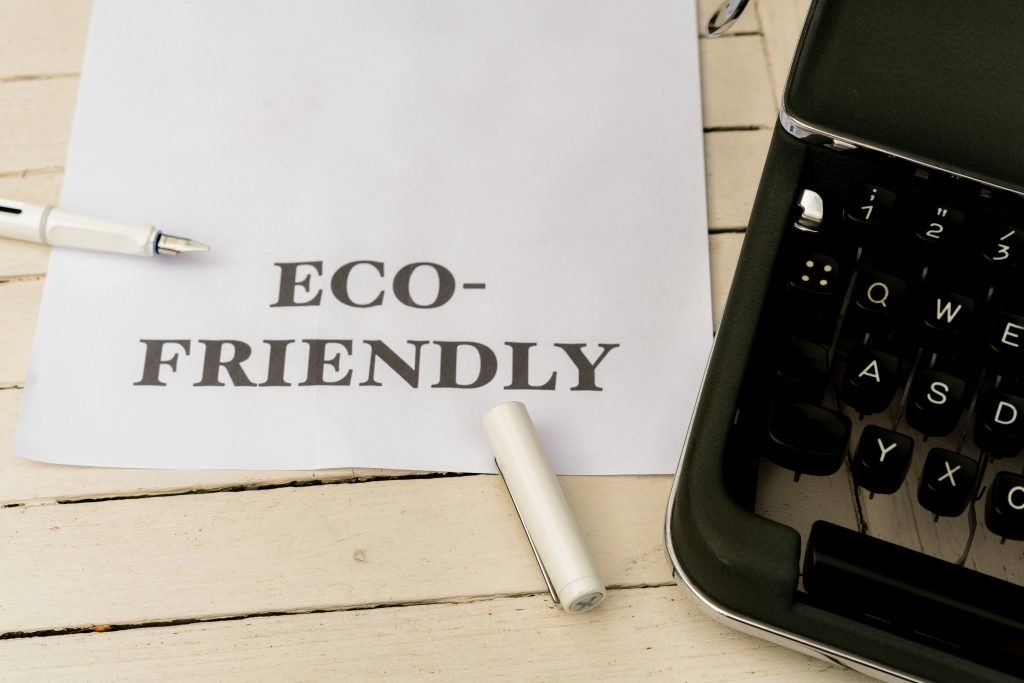For years, I believed sustainability was mainly about passion and values — the desire to “do the right thing.” But somewhere along the journey, I realized something uncomfortable: intent without metrics is invisible. You can’t improve what you can’t measure, and sustainability without evidence is just branding.

In 2025, that truth has never been clearer. The conversation around sustainability has evolved beyond pledges and annual reports. Stakeholders — from investors to regulators — now demand verifiable data that proves measurable impact. Companies are expected to demonstrate how sustainability can be measured through evidence of reduced emissions, smarter resource use, ethical supply chains, and even the energy consumed by the algorithms that power their products.
You may want to read the article about ISO Sustainability – Business
The rise of AI-driven analytics and new global frameworks has transformed how sustainability can be measured. Tools can now track emissions in real time, model environmental risk across entire supply chains, and calculate the carbon intensity of digital operations. The challenge isn’t whether data exists — it’s whether organizations can integrate and interpret it meaningfully.
Sustainability today sits at the intersection of data science, governance, and accountability. Frameworks such as the EU Corporate Sustainability Reporting Directive (CSRD), which began enforcing new European Sustainability Reporting Standards (ESRS) in 2025, and the Global Reporting Initiative (GRI) are driving organizations toward greater transparency and measurable results. At the same time, digital innovation is reshaping how sustainability can be measured in practice.
The Green Software Foundation continues to publish 2025 guidance on reducing the environmental impact of software and AI operations, emphasizing that sustainable technology must be designed as efficiently as it is intelligent. Meanwhile, the UN Environment Programme’s 2025 Frontiers Report and its Resource Efficiency Framework underline a critical message: the future of sustainability lies in how effectively we use data, technology, and design to minimize global impact while maximizing accountability.
But measurement isn’t only about compliance or regulation. It’s about clarity — seeing the real-world impact of our actions and translating intention into quantifiable progress. Understanding how sustainability can be measured helps uncover hidden inefficiencies, validate good practices, and reveal where innovation is most urgently needed.
That’s what this article explores: how sustainability can be measured — technically, transparently, and humanely. It’s a personal reflection on how data can turn values into measurable change, and a technical roadmap for those building the tools and systems that make sustainability real.
Table of Contents
Sustainability without measurement is storytelling. With measurement, it becomes strategy.
In this article, I explore sustainability measurement from two angles:
- Personal: what it feels like to chase real impact instead of optics.
- Technical: how data pipelines, frameworks, and metrics turn sustainability into science.
Sustainability has matured from a philosophy into a data discipline — one that blends ethics, engineering, and economics.

2. The Historical Struggle to Quantify Sustainability
Sustainability’s early years were about awareness, not precision. The 1990s gave us the first corporate environmental reports — glossy brochures with photos of forests, often lacking numbers. Companies were praised for intention, not outcomes, because few truly understood how sustainability can be measured in a consistent and data-driven way.
The turning point came with the Global Reporting Initiative (GRI) in the late 1990s. GRI created standardized sustainability indicators — a language companies could share publicly. Then came the UN Sustainable Development Goals (SDGs), which offered global direction but not measurement precision.
Still, the landscape was fragmented. Two companies could claim “carbon neutrality” while using entirely different accounting methods. Sustainability became measurable in theory, but inconsistent in execution.
As someone who has built sustainability dashboards, I’ve seen firsthand how different departments interpret “sustainable” differently. Operations focus on emissions, HR tracks diversity, finance looks at ESG ratings — yet few speak a common measurement language.
3. Frameworks That Matter Today
If sustainability had a periodic table, frameworks would be its elements. Each has a unique purpose, yet together they define how we quantify responsibility.
Global Reporting Initiative (GRI)
- Focus: Broad ESG disclosure for public transparency.
- Strength: Universally recognized; stakeholder-focused.
- Weakness: Often qualitative; limited comparability.
- Personal note: I consider GRI the “grammar” of sustainability — not perfect, but essential for coherence.
SASB (Sustainability Accounting Standards Board)
- Focus: Industry-specific metrics for investors.
- Strength: Clarity; materiality per sector.
- Weakness: Primarily financial perspective.
- Opinion: SASB works best when companies already have strong data pipelines.
TCFD (Task Force on Climate-Related Financial Disclosures)
- Focus: Climate risk management and disclosure.
- Strength: Future-oriented; scenario-based.
- Weakness: Requires technical modeling.
- My take: Brilliant for large enterprises, intimidating for startups.
UN SDGs (Sustainable Development Goals)
- Focus: Global sustainability priorities.
- Strength: Visionary, unifying language.
- Weakness: Not quantifiable without local KPIs.
- Personal insight: SDGs inspire stories; frameworks like GRI make them measurable.
ISO 14064 / ISO 50001
- Focus: Emissions and energy management standards.
- Strength: Audit-ready, data-centric.
- Weakness: Implementation complexity.
- Comment: ISO standards are the backbone for technical verification.
Green Software Foundation
- Focus: Software and digital sustainability metrics.
- Strength: Brings carbon accounting to code.
- Opinion: The next revolution — measuring how efficient our algorithms are.

4. Technical Deep Dive: Measuring Digital Sustainability
When we think of carbon, we picture smoke stacks, transport fleets, and heavy industry — the visible symbols of pollution. But in 2025, a growing share of global emissions now originates from the digital world: data centers, cloud infrastructures, AI model training, and billions of interconnected devices running 24/7. Understanding how sustainability can be measured in this digital context means going beyond physical emissions and accounting for the invisible carbon footprint hidden behind every computational process.
Each video streamed, model trained, and transaction processed consumes energy — often from non-renewable sources. Recent studies show that digital operations now account for more than 4% of total global CO₂ emissions, and that number is expected to rise as generative AI and cloud services scale. Measuring digital sustainability therefore requires new kinds of metrics: energy per compute cycle, data transfer efficiency, and code-level optimization scores.
In 2025, forward-thinking organizations are using carbon-aware algorithms that dynamically adjust workloads based on grid intensity, shifting compute tasks to times or regions where renewable energy is abundant. This represents a new chapter in the evolution of how sustainability can be measured: one where efficiency, automation, and intelligence converge. True sustainability now extends from boardroom policies to the efficiency of each software deployment.
By learning how sustainability can be measured and quantified across our digital infrastructure, we begin to see sustainability not as an abstract responsibility, but as a data-driven performance discipline — one that makes the invisible measurable and the intangible accountable.
Key Metrics
- PUE (Power Usage Effectiveness): Measures data-center efficiency.
- Energy per API Call: Tracks computational energy intensity.
- Network Carbon Footprint: Quantifies data transfer emissions.
- Application Idle Time: Reveals unnecessary resource consumption.
- Code Efficiency Index: Evaluates algorithmic resource use.
Tools
- Cloud Carbon Footprint (Open Source)
- Cloud Carbon SDK (Google)
- Azure Sustainability Manager
- Green Metrics Tool (GSF)
I once optimized a cloud workload by 35% just by adjusting the caching interval — a reminder that sustainability often hides in small details.
5. Data Pipelines and Automation for ESG Metrics
Sustainability data has grown from spreadsheets into live ecosystems. A modern ESG pipeline can integrate IoT sensors, cloud APIs, and predictive analytics.
Typical Data Flow:
- IoT devices measure emissions, water, or energy.
- Data flows into a centralized data lake (Azure, AWS, or on-prem).
- Automated scripts clean, normalize, and tag the data.
- BI dashboards visualize performance in near real time.
- Reports feed directly into GRI or TCFD submissions.
Automation minimizes bias. Yet, the challenge remains — garbage in, garbage out. Inconsistent sensors or incomplete APIs can distort sustainability perception.
I advocate for open-source pipelines. When data logic is visible, sustainability regains credibility.
6. Personal Reflection: The Human Side of Measurement
Data may drive sustainability, but people sustain it. When I first introduced metrics into a sustainability program, I saw mixed reactions: pride, anxiety, and curiosity. Numbers expose gaps — and that can feel uncomfortable. Some employees celebrated their progress, while others suddenly saw how much remained to be done. That was the moment I realized that understanding how sustainability can be measured isn’t just about technology or data frameworks — it’s about psychology, culture, and empathy.
Behind every dashboard lies a human story. Metrics can empower, but they can also intimidate. When sustainability indicators become public within an organization, they shift the social dynamic — transforming sustainability from a collective aspiration into a transparent scorecard. I’ve watched teams go from defensive to inspired once they understood that measurement isn’t about blame; it’s about visibility and opportunity.
Teaching people how sustainability can be measured is also teaching them how to see their own impact differently. Engineers begin to recognize that efficient code contributes to lower emissions. Operations teams start noticing the carbon cost of logistics. Executives finally connect financial efficiency with resource optimization. The act of measurement aligns departments that once operated in silos, creating shared language and purpose.
Still, data alone doesn’t build a sustainable culture — it’s the conversation around that data that matters most. Sustainable change happens when numbers spark collaboration rather than competition, when transparency leads to curiosity instead of fear. In my experience, the best sustainability programs are those where people feel ownership over the metrics, not surveillance by them.
Because ultimately, knowing how sustainability can be measured is not just a technical skill — it’s a human discipline. It demands honesty, humility, and a willingness to learn from what the data reveals. When that mindset takes root, sustainability stops being an external goal and becomes an internal value — woven into the way people think, build, and decide every day.
Some employees began competing to lower their department’s footprint; others felt accused. That’s when I learned the essence of sustainable culture: metrics must guide, not shame.
Every organization has its own rhythm. For startups, a monthly sustainability stand-up might be enough. For corporations, embedding KPIs into OKRs works better. The goal is integration, not overload.
Sustainability metrics succeed only when they turn awareness into empowerment.
7. Future Outlook: AI, Blockchain, and Predictive Sustainability
Tomorrow’s sustainability will be predictive.
AI models already forecast emissions based on behavior patterns, identifying anomalies in real time. Machine learning can pinpoint inefficiencies before they become waste.
AI Use Cases:
- Predictive energy optimization in buildings and servers.
- Dynamic supply chain routing to minimize transport emissions.
- Generative models designing sustainable materials.
Blockchain:
Used for traceability — from carbon credit verification to ethical sourcing proof. Imagine scanning a product QR code and seeing verified emissions data across its entire lifecycle.
Yet, I’m cautious: AI without ethics just optimizes pollution faster.
Sustainability must evolve with accountability — explainable AI, transparent algorithms, and open verifiability.
8. Actionable Guide: How to Start Measuring Sustainability in 30 Days
Even small organizations can start now. You don’t need a corporate budget or a full ESG department to understand how sustainability can be measured effectively. In fact, smaller companies often have an advantage — they can move faster, collect data more directly, and build sustainability into their operations from day one. Measuring doesn’t have to mean complex software or consulting fees; it starts with awareness, discipline, and a few consistent metrics that matter to your business.
Start with what you already control: your energy use, travel habits, procurement choices, and cloud consumption. A single spreadsheet can evolve into a powerful sustainability dashboard if it’s updated regularly and shared transparently. Over time, this data tells a story — one that shows progress, not perfection. The key is to make sustainability measurable, visible, and repeatable.
For smaller teams, learning how sustainability can be measured is really about embedding sustainability into everyday decisions. Choose digital tools that automatically track your carbon footprint, monitor waste reduction, or estimate emissions from logistics. Platforms like Power BI, Google Sheets, or even open-source ESG trackers can turn simple numbers into actionable insights.
When you begin small, measurement becomes a habit instead of a burden. Employees start recognizing their role in the organization’s footprint — whether it’s turning off idle devices, optimizing remote collaboration, or selecting greener suppliers. These small actions accumulate into tangible impact.
The most successful sustainability journeys I’ve seen start this way: not with massive investment, but with curiosity and consistency. Once you start measuring, you start improving — and once you improve, momentum builds. Because understanding how sustainability can be measured isn’t about the size of your organization; it’s about the sincerity of your intent and the clarity of your data.
Step 1 – Define Scope:
Decide what sustainability means for you — emissions, diversity, ethics, or all.
Step 2 – Pick Five Metrics:
Choose measurable ones: energy use, travel footprint, code efficiency, supplier ethics, recycling rate.
Step 3 – Establish Baseline:
Track one month of data before setting targets.
Step 4 – Automate Collection:
Use tools like Power BI, Google Sheets + scripts, or open APIs.
Step 5 – Communicate Results:
Share progress visually — dashboards inspire ownership.
Remember: perfect data is less important than consistent tracking.
9. Conclusion – Measurement as the Language of Integrity
Sustainability has entered its most critical phase: the measurable era. For decades, sustainability was driven by ideals and aspirations — a moral compass pointing toward a better future. But in 2025, ideals alone are no longer enough. The organizations shaping tomorrow are those that can prove their impact with data, transparency, and integrity. This is the new reality of how sustainability can be measured — where progress is not proclaimed but demonstrated through evidence.
When metrics meet intention, sustainability transforms from a philosophy into a performance system. Every measurable action — from energy efficiency to ethical sourcing to digital carbon reduction — becomes part of a company’s narrative of accountability. The more precisely we measure, the more visible change becomes. The invisible cost of production, the hidden emissions behind digital systems, and the social consequences of business decisions all start to surface. That visibility doesn’t just improve processes; it reshapes culture.
Measurement fosters a new kind of honesty within organizations. It forces us to confront where we fall short, but it also gives us the language to celebrate authentic progress. As sustainability reporting matures, teams begin to treat sustainability KPIs with the same seriousness as financial metrics. Boardrooms discuss emissions with the same urgency as revenue. Engineers talk about code efficiency in the same breath as user experience. This is what cultural accountability looks like — when sustainability data becomes part of everyday decision-making.
Ultimately, understanding how sustainability can be measured is not a destination; it’s a continuous learning cycle. Metrics evolve, technologies improve, and global expectations shift. But the principle remains constant: sustainability only matters when it’s visible, traceable, and verifiable.
For me, measuring sustainability has never been about compliance. It’s not a checkbox exercise or a report prepared for auditors. It’s a moral compass built on data — a reflection of integrity made visible through numbers. When I look at a sustainability dashboard, I don’t just see statistics; I see decisions, trade-offs, and intent transformed into impact.
Every dataset tells a story — not just of carbon or kilowatts, but of how deeply we care about tomorrow. Each metric, whether it measures emissions, efficiency, or equity, is a small act of accountability. It’s proof that behind every line of data there are people who chose to measure instead of assume, to verify instead of claim. That, to me, is where real progress begins.
Understanding how sustainability can be measured means accepting that data is our new ethical language. It speaks not just to investors and regulators, but to the generations who will inherit what we leave behind. Numbers are not the end goal — they’re the means through which our values take shape in the real world. They bridge the gap between ambition and action, between what we promise and what we actually deliver.
Because sustainability isn’t just a technical discipline; it’s a mirror held up to our collective responsibility. When we measure honestly, we’re not just tracking outputs — we’re defining what kind of future we want to build.
Sustainability without numbers is poetry.
With numbers, it becomes progress.
- Sustainability Law 2025: Europe’s Defining Moment
 A Crossroads for Europe Europe has reached a turning point in how it defines responsibility in business.For several years, policymakers, companies, and civil-society groups have been working on a sustainability law — The Corporate Sustainability Due Diligence Directive (CSDDD) is a landmark initiative by the European… Read more: Sustainability Law 2025: Europe’s Defining Moment
A Crossroads for Europe Europe has reached a turning point in how it defines responsibility in business.For several years, policymakers, companies, and civil-society groups have been working on a sustainability law — The Corporate Sustainability Due Diligence Directive (CSDDD) is a landmark initiative by the European… Read more: Sustainability Law 2025: Europe’s Defining Moment - How Sustainability Can Be Measured: A Practical and Personal Look at the Future of Green Metrics and Technology
 For years, I believed sustainability was mainly about passion and values — the desire to “do the right thing.” But somewhere along the journey, I realized something uncomfortable: intent without metrics is invisible. You can’t improve what you can’t measure, and sustainability without evidence is just… Read more: How Sustainability Can Be Measured: A Practical and Personal Look at the Future of Green Metrics and Technology
For years, I believed sustainability was mainly about passion and values — the desire to “do the right thing.” But somewhere along the journey, I realized something uncomfortable: intent without metrics is invisible. You can’t improve what you can’t measure, and sustainability without evidence is just… Read more: How Sustainability Can Be Measured: A Practical and Personal Look at the Future of Green Metrics and Technology - Apartment Composting Mistakes (and Fixes) in 2025
 Composting in small apartments is rewarding, but many beginners face common composting mistakes like odor, pests, or bins that don’t work. The good news? With the right methods and fixes, you can compost indoors in 2025 without the mess. The good news? Almost every apartment composting… Read more: Apartment Composting Mistakes (and Fixes) in 2025
Composting in small apartments is rewarding, but many beginners face common composting mistakes like odor, pests, or bins that don’t work. The good news? With the right methods and fixes, you can compost indoors in 2025 without the mess. The good news? Almost every apartment composting… Read more: Apartment Composting Mistakes (and Fixes) in 2025 - Apartment Composting: A Smart Choice for Sustainable Living
 Living in a small apartment myself, I know how tricky it can be to balance sustainability with convenience. In 2025, apartment composting feels like one of those eco habits that sounds amazing in theory — but in practice, it’s easy to wonder: is it really worth… Read more: Apartment Composting: A Smart Choice for Sustainable Living
Living in a small apartment myself, I know how tricky it can be to balance sustainability with convenience. In 2025, apartment composting feels like one of those eco habits that sounds amazing in theory — but in practice, it’s easy to wonder: is it really worth… Read more: Apartment Composting: A Smart Choice for Sustainable Living - L’Oréal’s €345 Million Push: The Future of Corporate Sustainability Trends 2025
 From my perspective, the L’Oréal sustainability investment is both inspiring and strategic. A €345M fund is not a symbolic gesture — it’s a concrete signal that one of the world’s biggest beauty brands is serious about long-term change in corporate sustainability trends 2025. At the same… Read more: L’Oréal’s €345 Million Push: The Future of Corporate Sustainability Trends 2025
From my perspective, the L’Oréal sustainability investment is both inspiring and strategic. A €345M fund is not a symbolic gesture — it’s a concrete signal that one of the world’s biggest beauty brands is serious about long-term change in corporate sustainability trends 2025. At the same… Read more: L’Oréal’s €345 Million Push: The Future of Corporate Sustainability Trends 2025


